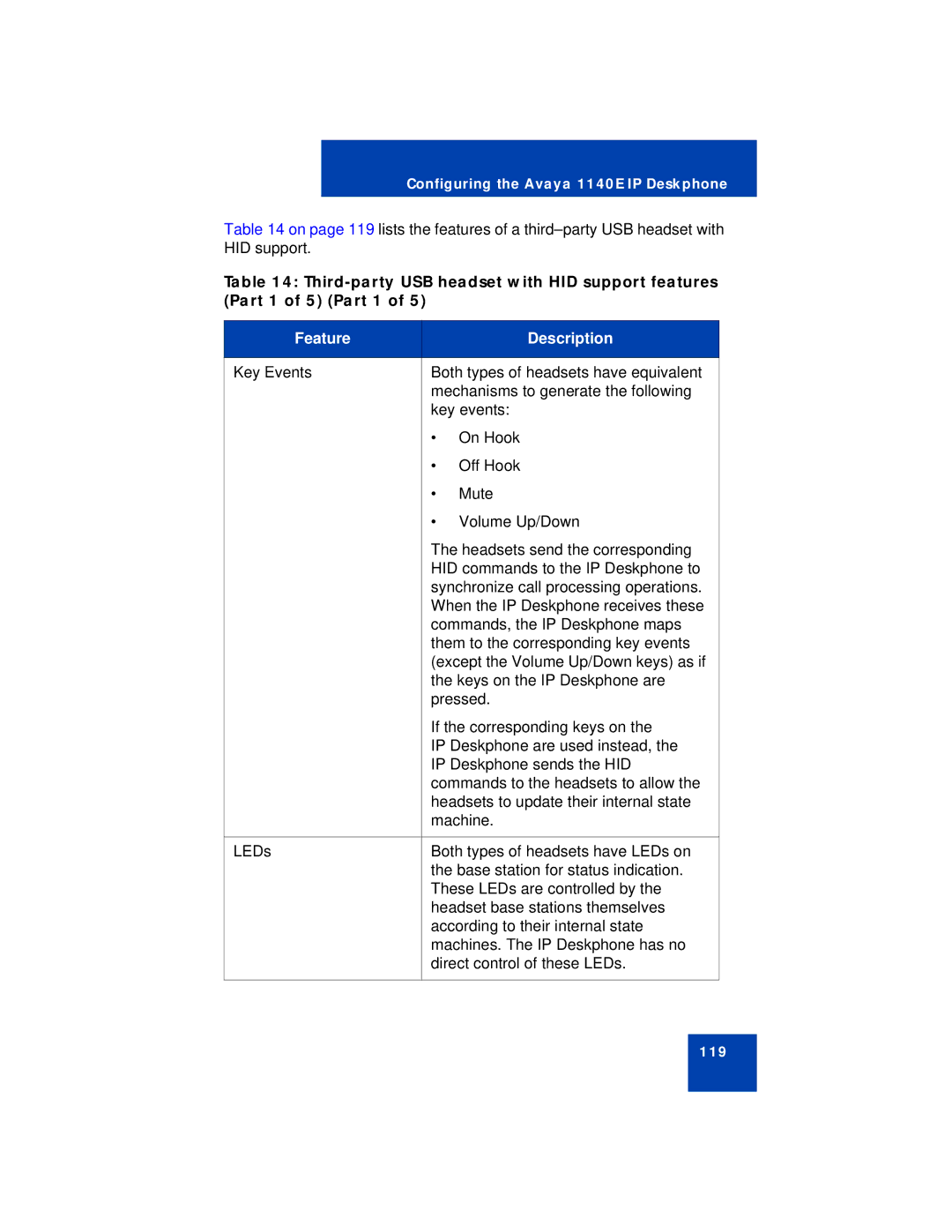
Configuring the Avaya 1140E IP Deskphone
Table 14 on page 119 lists the features of a
Table 14:
Feature |
| Description |
|
| |
Key Events | Both types of headsets have equivalent | |
| mechanisms to generate the following | |
| key events: | |
| • | On Hook |
| • | Off Hook |
| • | Mute |
| • | Volume Up/Down |
| The headsets send the corresponding | |
| HID commands to the IP Deskphone to | |
| synchronize call processing operations. | |
| When the IP Deskphone receives these | |
| commands, the IP Deskphone maps | |
| them to the corresponding key events | |
| (except the Volume Up/Down keys) as if | |
| the keys on the IP Deskphone are | |
| pressed. | |
| If the corresponding keys on the | |
| IP Deskphone are used instead, the | |
| IP Deskphone sends the HID | |
| commands to the headsets to allow the | |
| headsets to update their internal state | |
| machine. | |
|
| |
LEDs | Both types of headsets have LEDs on | |
| the base station for status indication. | |
| These LEDs are controlled by the | |
| headset base stations themselves | |
| according to their internal state | |
| machines. The IP Deskphone has no | |
| direct control of these LEDs. | |
|
|
|
